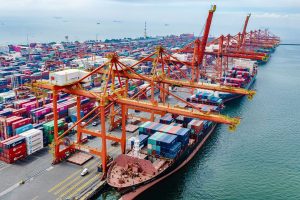PHILIPPINE MERCHANDISE export growth is expected to accelerate to 7.9% in 2025 even in the face of looming trade barriers.
According to the United Nations Economic and Social Commission for Asia and the Pacific (ESCAP), merchandise imports are expected to grow 7.9%, against the 2.9% posted in 2024.
The baseline projection for the Philippines is to post the fifth-highest growth in the Asia-Pacific Region, behind Vietnam (16.1%), Japan (9%), Bangladesh (8.6%), and New Zealand (8%).
Average growth of merchandise exports in the Asia-Pacific is seen at 3.5% in 2025.
“It is important to note that these baseline projections for Asia-Pacific trade growth in 2025 remain highly uncertain, ESCAP said in a report released on Dec. 25.
“A slower-than-expected recovery in major economies, including China, coupled with the increasing prevalence of protectionist policies could significantly hinder the region’s economic and trade performance.”
On top of this, the “potential imposition of substantial and unpredictable tariff barriers” by the US, along with possible retaliatory measures, present additional risks to economic and merchandise trade growth.
Meanwhile, Philippine merchandise imports are forecast to rise 2.3% this year, against 8.3% in 2024.
Separately, Aladdin D. Rillo, managing director for Policy Design and Operations for the Economic Research Institute for ASEAN and East Asia said increasing economic interdependence makes it more challenging for the Association of Southeast Asian Nations (ASEAN) to deal with global uncertainties.
“I think definitely all these uncertainties in the global economy, all these issues related to fragmentation and recovering will definitely impact any countries in the world, including the Philippines,” Mr. Rillo said.
He also said that global economic fragmentation will be costly, which could cause the economy to decline by 7% amounting to around $7.6 trillion.
Asked about non-tariff barriers, he said they are expected to persist.
According to the Department of Trade and Industry, non-tariff barriers include rules that dictate how a product can be manufactured, handled, or advertised, guidelines that require proof of which country goods were produced in, and setting a limit on the amount of a certain product that can be sold in a market.
He again credited this to increased economic integration.
“Therefore, it’s now up to countries to be able to commit themselves in terms of developing the right environment, and the right policies,” he said, and producing favorable results.
Meanwhile, Mr. Rillo commended the Regional Comprehensive Economic Partnership — a free trade agreement between 16 countries.
It provides a framework aimed at lowering trade barriers and securing improved market access for goods and services for businesses in the region.
He called it a “game changer” that introduces different trade rules that will help companies and countries integrate more, and take advantage of the benefits of greater trade and investment.
The Philippines’ full-year trade balance — the difference between the values of exports and imports — grew by 3.1% year on year to a $54.21-billion deficit in 2024 from the $52.59-billion gap a year earlier, according to preliminary data from the Philippine Statistics Authority. — Aubrey Rose A. Inosante
